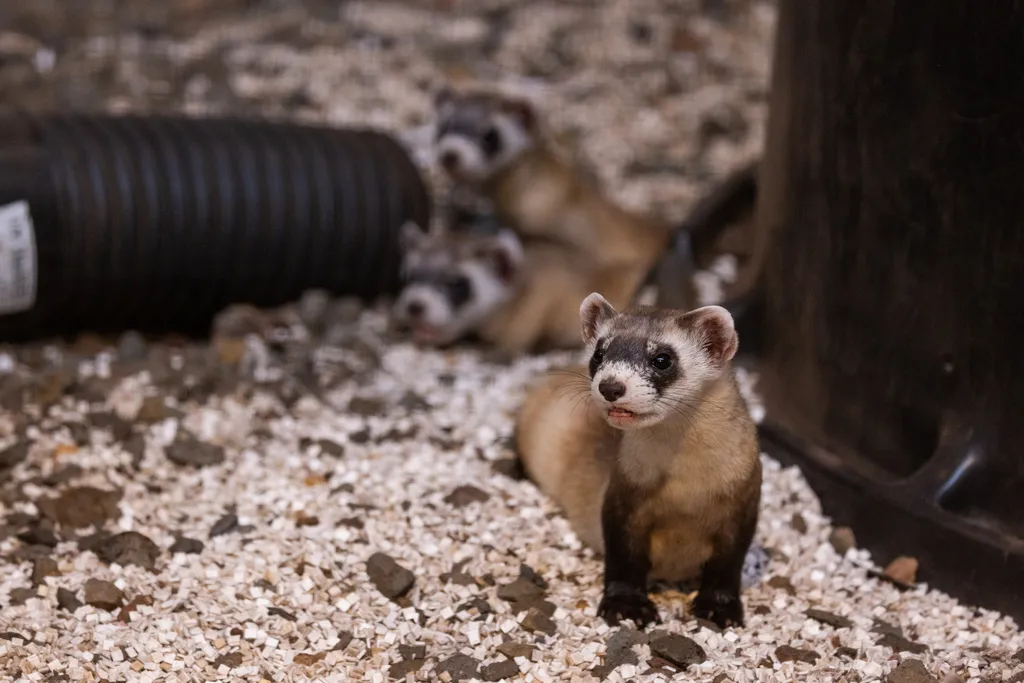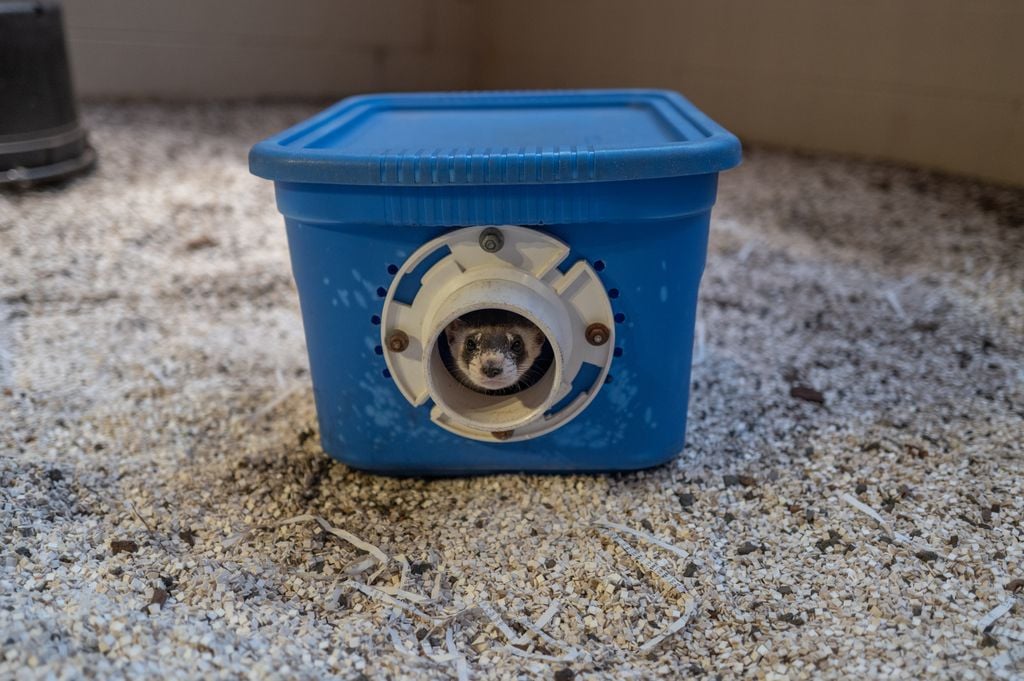NATIONAL ZOO AND CONSERVATION BIOLOGY INSTITUTE
How to Perform a Black-Footed Ferret Health Exam
The ferret kits at the Smithsonian National Zoo and Conservation Biology Institute’s breeding facility in Front Royal, Va., just passed their 90-day health check with flying colors.
/https://tf-cmsv2-smithsonianmag-media.s3.amazonaws.com/filer_public/f6/b7/f6b747d2-7cbc-43b8-82c8-33e9199c1bdb/20240813-817a3890-01rp.jpg)
On August 10, we hit the 90-day mark since black-footed ferret mother Aristides’ six kits were born. That means it’s time for a health check! Here’s what’s involved.
First, we wrangle the ferrets.
This is tricky because we care for black-footed ferrets differently than other animals. The goal of our conservation program is to raise self-sufficient ferrets that can be released into the wild, which becomes much, much harder if they imprint on humans. With other animals, like cheetahs or red pandas, we train them to participate in health exams through positive reinforcement. But with these ferret kits, we keep a hands-off approach to raising them and do not interact with them.

The kits grow rapidly—in fact, they're almost at adult size. But they’re still small, they wriggle a lot, and they’re not used to being held. So we have to be extra careful to make sure we handle them quickly so as not to stress the family group.
Next, we give each kit a thorough look-over to make sure they don’t have any visible health issues. All of Aristides’ kits are healthy and strong.
Then we deliver two vaccinations. We inoculate the ferrets against rabies and canine distemper virus, which can be deadly if untreated.
Earlier in the year, we also microchipped each kit with a tracking transponder, like the one you might get for your cat or dog at the vet’s office. The transponders help us identify each animal, which is difficult because they look so similar.

After giving the kit both shots, we release them back into their habitat area and move on to the next one. Aristides has six kits, which means our animal care teams get a lot of practice making these health checks run as smoothly as possible. If the veterinary team is concerned about anything, they'll schedule follow ups as necessary.
And we’re done! The kits aren’t too bothered by this exam. In just a few moments, they’ll go back to wrestling with each other and playing with their enrichment items.

In just a few weeks, our ferrets will be moving on from their nursery den. We just found out that 5 of the 6 kits will be heading to the U.S. Fish and Wildlife Service’s National Black-Footed Ferret Conservation Center to join the preconditioning program, which prepares them for life in the wild. (We’re not yet sure whether the last kit will be staying here at our conservation science facility in Front Royal, Va., or joining another zoo’s ferret breeding program.)
Seeing them go is always hard, but it’s rewarding to know they’ll be contributing to the recovery of their species. Until then, you still have a few more weeks to connect with them on the Smithsonian National Zoo and Conservation Biology Institute's Black-footed Ferret Cam!
